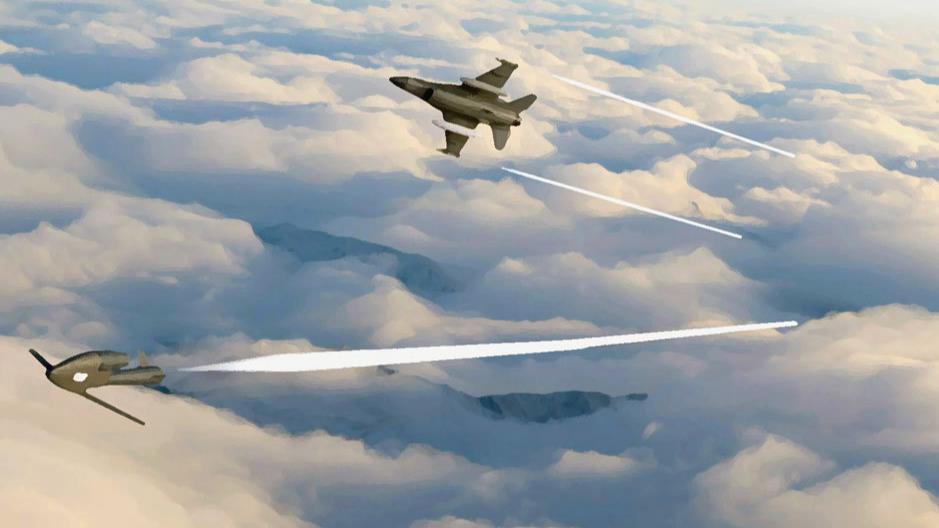The reason you don't see pulsejet cruise missiles is that historically it didn't make economic sense to deal with the limitations of pulsejets given the cost of the guidance system required to achieve the CEP desired. Earlier in this thread there are suggestions that the guidance for a Shahed drone might be as much as half the £16k cost. The reality is that using commercial off the shelf components it should cost no more than £1k at the very outside, more like half that.
So let's compare the German V1 to a Storm Shadow. The later F1 variant of the V1 had a ~500kg warhead and a range of 250 miles which is comparable with the Storm Shadow. Noting the Shahed 136 has only a ~50kg warhead. There are improvements you could make to a modern V1 variant that could easily push the range out to 300+ miles. Mostly make it out of lighter materials and improve the aerodynamics, though even the Germans were developing an improved Argus As 014.
The attraction of a pulse jet is always the price. The V1 cost the equivalent of about £20k to make in today's money, whereas the cost of a Storm Shadow is more like £2 million. The guidance system so; laser ring gyroscope INS, jam resistant GNSS and terrain contour mapping with IR terminal guidance will be mid six figures alone. At that point, a cheap pulse jet power plant is not worth the compromises. That <10m CEP of the Storm Shadow is worth all the extra cost compared to the 11km CEP of the V1.
However it is now 2024 and well we could use a MEMS INS, several commercial off the shelf GNSS receivers and frankly a Raspberry Pi equivalent with a Sony global shutter and a digital visual positioning system, and similarly for terminal guidance. All for under £1k unit cost to achieve a similar CEP. Even 10 years ago these technologies were not viable. The idea you could have 500GB of high resolution satellite photography on a £50 micoSD card for the visual positioning system was fantasy land.
Now it starts to look a lot more attractive. For every Storm Shadow missile, you could have 100 modern V1 variants with a similar range and payload. These days it would be entirely feasible to use an electromagnetic launch system mounted on a 8x8 military vehicle instead of the static steam catapults the Germans used. Just park the launcher pointing roughly in the right direction and it can course correct after launch to get on target. It is now common place for rollercoasters to use electromagnetic systems to accelerate the rides to over 100mph which is in the ball park for launching a V1 variant.
Putting this into context imagine you had £4 billion. Spent £1 billion developing the system, £2 billion buying new V1 variant flying bombs, and the remaining £1 billion on launch and support vehicles at say £15 million per launcher. That gets you 100,000 missiles and 67 launchers. Imagine for a moment this is in Ukraine that would be 274 missiles a day every day being launched at anything within say 250 miles of the front line. You could have 100 bombs a day landing on Sevastopol harbour for a year, 100 bombs a day landing on the Kerch Bridge for a year and still have another 70 missiles a day for other targets every day for a year. If you are willing to drive closer to the border you could rain down bombs on Moscow as it is less than 300 miles from the Ukrainian border.
There are other things about this. If you are making 100,000 of these then modern high volume manufacturing methods could be employed that simply were not available to the Germans. So for example it would be entirely feasible to make the body and wings out of diecast aluminium that simply snaps together. Injection moulded plastic nose cones that snap on. Some of this feeds back into the improvements to the bomb. Elliptical wings have low induced drag great for increasing range but difficult to manufacture. Not a problem when the wing is a handful of clip together diecast aluminium segments. Before anyone says you can't do that I suggest checking out what Tesla is doing with manufacturing car bodies out of large diecast aluminium segments. These modern high volume manufacturing methods also help to keep the unit cost as low as possible.
How about an airburst version that sprays 10mm steel ball bearings everywhere? Ok not as good as tungsten but good enough to make a right mess of an airframe. Because we have so many it would be feasible to program them to cover the entire airfield by having them go off in a grid pattern. The possibilities are really quite extensive.
So again why has nobody taken this up? Well firstly this has only been a viable option in the last two or three years and it will take time for people to wake up to the changes that make this sort of weapons system possible. The other issue is that prior to the Russian invasion of Ukraine, the sort of high-intensity conflict where you would want 100,000 flying bombs a year didn't exist. When someone wakes up and develops one well that will be very scary. For context, the UK has pledged £7.1 billion in military aid so more than enough for 100 launchers and 200,000 flying bombs. The biggest problem would be sourcing 100,000 tonnes of high explosives for 200,000 flying bombs.

